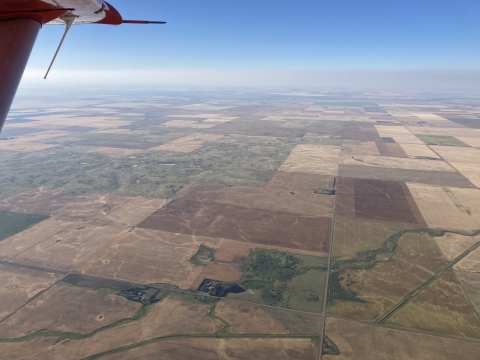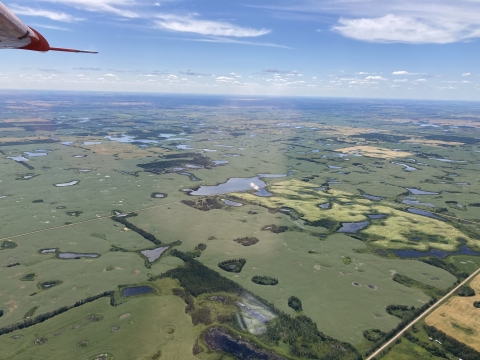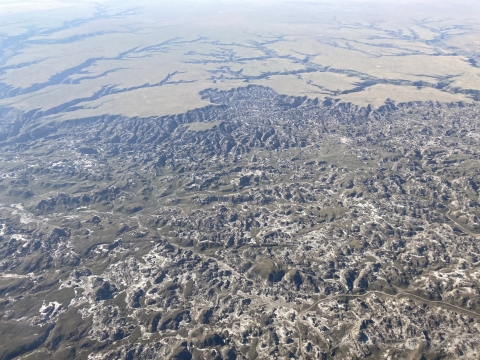About this Collection
Banding remains a pillar of scientific waterfowl population management
By Mark Koneff and Phil Thorpe
August is synonymous with waterfowl banding for the Service’s Division of Migratory Bird Management. For decades, banding has been one of three core monitoring programs that underpin modern, scientific approaches to waterfowl management.During banding operations, crews capture waterfowl where they congregate to molt or stage prior to fall migration and apply uniquely numbered metal leg bands.When hunters harvest the banded birds and report the band number, waterfowl managers can use that recovery data to estimate important population parameters such as survival rates and harvest rates. Banding recovery data are also important for assessing the relative vulnerability of various age-sex classes to hunting, which allows managers to adjust age ratios in harvest data as an estimate of reproductive rates. Our August banding efforts are considered “preseason” banding in that it precedes the hunting season.In estimating harvest rates, its advantageous that banding occurs just prior to migration and the hunting season so that little natural mortality occurs between the time birds are banded and hunting seasons begin.
As far as the 2024 banding season goes, it’s been somewhat of an abnormal weather year, if normal and abnormal still even have meaning. In early August the jet stream tracked well north across arctic Canada and a weak atmospheric blocking pattern developed, locking in a dome of high pressure over the Northwest Territories.This delivered extreme heat to the artic and subarctic of central Canada while the prairies enjoyed below average, pleasant and dry conditions. Habitat conditions across prairie Canada remain variable and even with the increased isolated thunderstorms, many wetlands across the grasslands and western parklands remain dry or severely drawdown.In the boreal forest and tiaga of northern British Columbia, Alberta, Saskatchewan, and the Northwest Territories, above average temperatures and below average precipitation persisted through the early summer and have contributed to a high fire risk and another above average fire year.The smoke from these fires, while not as extreme as some years, has been noticeable in the southern boreal and the prairies as well.
Banding crews struggled this year in Saskatchewan and Alberta because of the dry conditions and warm temperatures.Some species like mallards just aren’t in a hurry to migrate, so they loaf in the vicinity of the traps, but are completely disinterested in the bait, so our banding teams can’t catch ducks and can get frustrated!We did have good success in Manitoba, where large numbers of molting mallards were more cooperative. In the southern boreal forest we were unable to band at several traditional sites due to extremely low water levels.All in all, it was another good year, not without its challenges, but a safe and successful August for our teams.
Robust monitoring programs are increasingly important if we are to ensure that the sport harvest of waterfowl annually is managed responsibly and that habitat conservation resources are targeted wisely.The dynamic nature of waterfowl populations and the habitats on which they depend, the ongoing and intensifying loss and alteration of critical prairie and boreal breeding habitats, rapidly increasing human impacts to major migration and wintering areas, and the extreme uncertainty posed by a changing climate all support the need for vigilance in monitoring and assessment of populations and their potential to sustain harvest.



